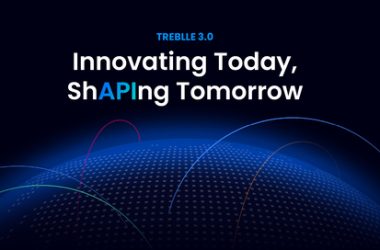Last Updated on: 4th February 2025, 10:23 am
The more advanced digital experiences, however, increasingly available to users require more relative to content in flexibility, in speed, and in scalability. Traditional CMS platforms in many ways limit developers essentially, traditional CMS platforms superimpose the content management layer to the rendering layer. A developer has to be dependent on one type of technology, one type of customization, and/or one type of rendering of content across various platforms.
A Headless CMS allows content to be kept and served in different places, meaning developers have the flexibility to build whatever high-quality applications they desire based on application needs, applied frameworks, and underlying technologies. This distinction creates a better developer experience as its content is API-first, displayed omnichannel, and easily integrated with third-party solutions. Thus, in terms of management and ease of operation for developers who want to customize and create omnichannel solutions for digital sustainability, a Headless CMS is best, as content can be rendered fast and safely across multiple channels without the limitations of legacy systems.
Decoupling Content for Greater Development Freedom
The greatest advantage of a Headless CMS is a decoupled architecture. Developers can develop and render on the frontend without concern for the backend and the other way around. A typical CMS solution focuses on content and delivery; it provides a backend-only view of what is expected on the frontend. Storyblok CMS for developers capsulizes the ability for developers to have the access and control they need from the first day of development all the way through rendering for any proprietary applications, websites, mobile sites, and more.
Thus, modern developers can use household names in front-end frameworks such as React, Vue.js, Angular, or Svelte to create highly dynamic, interactive experiences. Because the data is sent via RESTful or GraphQL APIs, developers receive only the data they need upon request, rather than all at once, resulting in faster load times, better performance, and longer time on page. In addition, because of the decoupling, developers can generate a new frontend at any time without disrupting the existing backend data structure, reducing downtime and increasing accessibility for enterprise-level, content-heavy projects.
API-First Content Delivery for Seamless Integration
A Headless CMS is API-driven, meaning that it exists as content in a central location and is sent to any front end or presentation layer via APIs. Essentially, this means that as long as a developer has the API access, they can push that content to any endpoint from websites to mobile apps to IoT devices, smart speakers, AR/VR apps. This is also advantageous for developers when building multi-channel experiences because they don’t have to duplicate the same content over two, three, or ten different platforms. Content managers can create and modify content in one place, and developers can dynamically call that content to render on any front end without making physical adjustments across every single front end themselves. Nowadays, even Headless CMS solutions offer GraphQL, so developers are no longer stuck having to pull different chunks of data via multiple requests. Everything they need beyond redundant requests can come in one package, and with fewer network calls, apps operate more efficiently. Thus, apps that compile tons of content news apps, e-commerce sites, SaaS analytical dashboards function faster and more effectively.
Faster Development and Deployment Cycles
Therefore, as someone who has made their own website and created it through a CMS from a front-end perspective, you’ll appreciate how development can maddeningly come to a crawl with templated fields, restrictive themes, and rendering engines that aren’t updated. Yet much of this isn’t an issue with a Headless CMS as developers can take to modern-day development paths and automated platforms, utilizing CI/CD (continuous integration/continuous deployment) platforms for quicker development sprints.
In addition, a Headless CMS makes for a decoupled existence as the content and the look and feel exist on the backend from developers and content creators; there are no worries that the content team and their publishing schedule will be disrupted by the developers wanting to implement new features to roll out to reskin the UI or test PWAs (progressive web apps). In addition, Headless CMS is cloud-based. As a result, developers adopt serverless architectures, microservices, and containerized deployments. This equates to enhanced performance, enhanced scaling, and diminished infrastructure costs that facilitate enterprise-level content management.
Enhancing Security with a Decoupled Backend
When it comes to content management, security is always a concern especially with eCommerce apps, financial apps, medical applications, and enterprise applications. Unfortunately, standard CMS solutions are insecure due to monolithic architecture, standard reliance on third-party plugins, and the backend being connected to the frontend. A Headless CMS is more secure by default due to the architectural separation of where the content lives and where it’s rendered. This reduces vulnerabilities to SQL injection attacks, misuse from unauthorized access to the site, and intrusions into customer data.
Furthermore, because content is delivered from an API to the presentation layer, developers have multiple options for authentication frameworks for endpoints and access to the data, such as OAuth and JWT (JSON Web Tokens) alongside role-based access control (RBAC) to help protect proprietary and sensitive information. In addition, a cloud-native Headless CMS supports enterprise-level security DDoS protection, encryption, API gateways to keep the content safe while being distributed across the omnichannel. In addition, a cloud-native Headless CMS allows for disaster recovery, daily backups, GDPR and CCPA compliance to ensure content is safe and reliable when managed.
Future-Proofing Content Management for Emerging Technologies
As technology advances, developers need to maintain content management systems increasingly and increasingly up to date. A Headless CMS thinks of the future for a content strategy because developers will easily be able to plug into what’s next AI modifications, machine learning, blockchain authentication, and so on. Likewise, businesses involved in voice search and conversational AI could utilize a Headless CMS as it would render and deploy voice-searchable content in an organized manner that would easily plug into smart assistants and chatbot software.
Companies looking to innovate with opportunities in augmented reality (AR) or virtual reality (VR) could use a Headless CMS to render and dynamically deploy 3D content and other immersive experiences. A Headless CMS allows developers not to be burdened by the potential of what’s next for new digital experiences without having to worry about outdated CMS structures stifling their development. This ensures that businesses keep themselves in an ongoing cycle of design and development because they’ll never know what’s next.
Simplifying Collaboration Between Developers and Content Teams
An important area of conflict surrounding digital assets stems from the divide between developers and content creators. While content creators have access to a more piecemeal approach to digital assets to create a web presence or application, developers create interactive opportunities that are unavailable to standard CMSs. Thus, the content development team is left with basic, out-of-the-box designs with limitations that hinder what would otherwise be a fluid experience with digital assets. Conversely, developers are annoyed by attempts to add and change content because that involves development time to readjust later on. A Headless CMS means developers and content creators no longer need to work in tandem.
For example, the content creators can add, edit, and publish content through the governed backend, and developers can tap into the API to pull and render that content on any front end, instantly. Since the presentation layer and content layer are decoupled edits to the content layer do not even need to be communicated to developers; those who need to work on the more technical side can work on design, speed, and functionality. Since a Headless CMS allows for content creation, rendering, and approval behind the scenes before anything goes live, publishing is easier, quicker, more accurate, and less hold-ups for digital projects which equates to more efficient teams, quality content, and quicker time to digital project delivery.
Reducing Maintenance and Technical Debt
Developers find themselves working with traditional CMSs in a state of technical debt because down the line, too many updates, dependence on plugins, and cookie-cutter frameworks make it so difficult to maintain in the future. Development comes to a standstill, security gaps widen, and scalability effectively fails and companies find themselves needing to waste time and money on migrations and remakings.
A Headless CMS lowers technical debt because it’s inherently modular and API-driven; connecting with other components typically found in a dev’s arsenal is always simple. In addition, with content decoupled from presentation, developers can use their styles and needs to update frontend libraries without the concern of negatively impacting how their content is rendered and they don’t necessarily have to update a CMS core or templates. Furthermore, as a cloud-based Headless CMS, solutions require no maintenance; all updates, security patches, and a scalable infrastructure are essentially in the cloud. Therefore, developers can refocus their energies on new innovations instead of troubleshooting old issues, and companies need not fret about future costs to keep their systems running in the 21st century.
The Bottom Line: Achieving Success with Headless CMS Ecosystems
Headless CMS increases developer flexibility, scalability, and content management efficiencies. By decoupling content from presentation, utilizing APIs to fetch and deliver data, and interfacing with emerging technologies, it allows for quick, customized delivery of anything and everything a user needs on any channel virtually anywhere today. Thus, if developers intend to build web applications or mobile applications or even for the metaverse they require a Headless CMS to build from a performance-driven, security-driven perspective while providing content flexibility for ease of scaling later. Therefore, as enterprise companies undergo digital transformation, a Headless CMS enables them to grow sustainably with the flexible, secure, and scalable solution that developers need for the future of digital.









